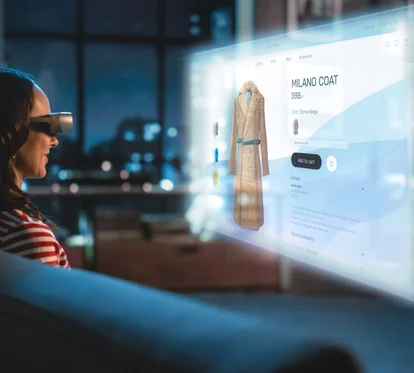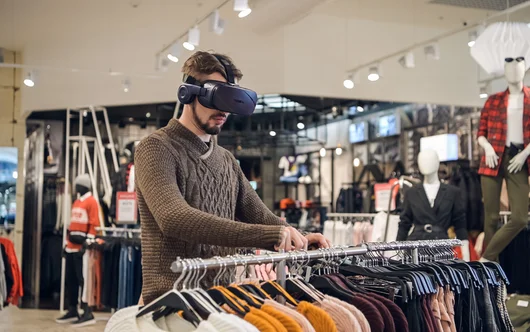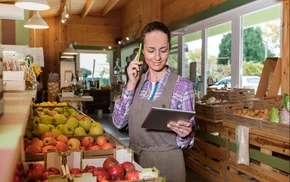Shopping has evolved significantly over the years, and gone are the days when shoppers engaged with retailers almost exclusively through a single channel. Today, most people prefer an omnichannel experience, which allows them to move seamlessly between multiple buying platforms, blurring the lines between physical and digital shopping. To respond adequately to evolving consumer demands, a growing number of retailers are embracing omnichannel strategies like buy online, pick up in-store (BOPIS), and buy online, return in-store (BORIS). These options provide consumers with unprecedented convenience and flexibility and significantly increase the likelihood of them completing a purchase. Once they get a taste of what omnichannel retailing brings, most people are unlikely to go back to the way things were. This means that omnichannel retailing could soon become a necessity — if it isn’t already — and those who fail to jump on the bandwagon could quickly find themselves out of business.
How ultrachannel is transforming retail

To provide consumers with increased convenience and flexibility, a growing number of retailers are adopting omnichannel strategies that enable consumers to move seamlessly between multiple channels.
How to synergise existing offline, online, and mobile channels to boost your business
Studies have shown that consumers regularly switch between two channels while shopping, or use their smartphones to assist them with in-store shopping. Many even admit to having made an online purchase while standing in the company’s physical store. There are numerous examples of companies that have successfully united their online and offline channels and provide their customers with a seamless shopping experience. For instance, with more than 25 million monthly visits, the website of British groceries and general merchandise retailer Tesco is one of the most visited grocery websites in the world. One in four of those visits end with a purchase, a conversion rate that no other online grocery store in the UK can match. Tesco owes its success to a robust omnichannel strategy, where the website serves as the extension of its physical stores. The company uses intelligent data analytics and a loyalty programme to collect all sorts of information about its customers and provide them with personalised offers. The German grocery retailer Aldi employs a similar strategy. It unites its online and offline channels and enables customers to buy their items online and either pick them up in the store, or have them delivered by couriers like Deliveroo and Instacart. And the French supermarket chain Carrefour has taken home delivery to a whole new level by introducing a new service that delivers groceries straight to the customer’s fridge.
The cosmetic retailer Sephora is another example of how to deploy a successful omnichannel strategy. Sephora’s mobile app, which is basically a one-stop shop for everything related to beauty, allows customers to browse products, watch tutorials, or explore the latest fashion trends. Customers can also try out products virtually and then add them to their shopping cart for delivery or in-store pickup. To help a customer decide which product to buy, the Color IQ feature can suggest products that match their skin tone. Called Tap and Try, this innovative product is essentially a mirror with RFID technology and augmented reality. It scans the customer’s face and shows them what certain products would look like without having to try them on physically. QR codes are another way to bridge the gap between online and offline shopping, as demonstrated by Decathlon. The sports retailer attached QR codes to price tags throughout their stores. The customers simply scan the code, purchase the item through the app, and walk out of the store. They can also have the item shipped to their home, eliminating the need to wait in a checkout line.

The rise of voice commerce
The growing adoption of digital technology within retail has also created new retail channels, with voice commerce in particular gaining ground in recent years. Voice commerce is very intuitive and enables you to make a purchase by issuing voice commands to a smart AI voice assistant like Amazon Alexa, Google Assistant, Siri, or Cortana. Amazon, the company behind Alexa, was one of the first to embrace voice-activated shopping. Other notable examples include Sephora and Walmart, both of which partnered with Google to provide their customers with a seamless, more personalised shopping experience. And the famous whiskey brand Johnny Walker teamed up with Amazon to bring whiskey enthusiasts a unique and personalised experience. After saying: “Alexa, open Johnnie Walker”, customers are presented with four different options: Choose a Label, Buy a Bottle, Whiskey 101, and Try a Guided Tour. Those who choose the first option will be asked a few questions about their flavour preferences and budget, after which they will receive personalised whiskey and cocktail recommendations.

Metaverse, a new channel in retail
Although initially associated primarily with gaming, the metaverse is now being explored for its potential applications in various other industries as well. In the retail space, the metaverse can help create immersive shopping experiences and enable customers to interact with products and brands in a virtual environment. Nike is already making bold steps into this new frontier. In addition to acquiring RTFKT, a company that specialises in creating virtual sneakers and collectibles, the sportswear giant also launched Nikeland, a platform where you can customise your own avatars and outfit them with the latest and greatest virtual Nike gear. The world of fashion was quick to embrace the metaverse, launching numerous virtual fashion weeks featuring some of the world’s leading fashion brands. Grocery retailer Albertsons followed suit by launching its own pilot experience in the metaverse. It offers customers the option to buy groceries by scanning QR codes on virtual billboards in the virtual world Decentraland and have them delivered to their doorstep within 45 minutes.
Towards ultrachannel retail
Omnichannel retailing has become a necessity for companies of all sizes. Today's consumers are far less patient than earlier generations and demand instant gratification via their platform of choice. The future of retail lies in ultra-personalisation, where brands tailor their marketing and sales strategies to individual customers, meeting them where they are. In the future, shopping will become increasingly integrated into all kinds of other aspects of our lives. Imagine being able to freeze your favourite TV show, click on an item a character is wearing, and purchase it almost instantly. Instead of billboards, we will have touchscreens and interactive ads that we can tap to instantly purchase the featured items. In the background, our mobile wallets automatically send our shipping information to the retailer. We will also wear smart glasses that automatically pull up information on any item that we see, including its brand, price, availability, and purchase link. Automated shopping bots will help us find the perfect gift for our loved ones or track down a rare car part without lifting a finger. And with virtual reality, we will be able to browse the products in a store on the other side of the world — all from the comfort of our own home. In the future of retail, brands and grocery stores will increasingly move towards an ultrachannel approach, which takes the concept of omnichannel to the next level to provide customers a highly personalised and interconnected experience that spans multiple online and offline touchpoints.

In closing
In today's world, shopping has become an exciting and dynamic experience, with consumers expecting nothing less than seamless integration across multiple platforms. The days of sticking to just one channel are long gone, and retailers who fail to adopt an omnichannel strategy risk becoming obsolete. The numbers don't lie: businesses that use three or more channels see a significant increase in their order rates compared to those that rely on a single channel. And companies that successfully bridge the gap between online and offline channels create a shopping experience that keeps customers coming back for more. From personalised offers to virtual try-ons, the possibilities are endless. And with the rise of voice commerce, the future of shopping looks more exciting than ever. So if you want your business to thrive in this ever-evolving retail landscape, it's time to embrace the power of omnichannel retailing and get creative with your approach.


